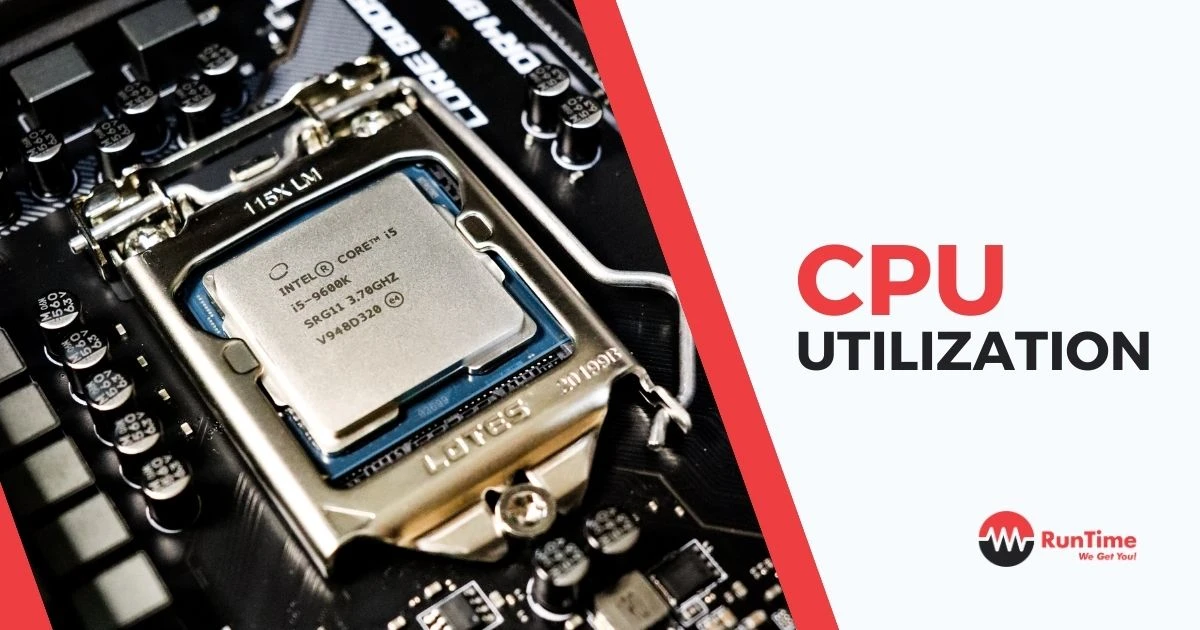The Central Processing Unit (CPU) is the heart of any computing system, responsible for executing instructions and carrying out the essential computational tasks that make computers function. To monitor and optimize system performance, one crucial metric to consider is CPU utilization. In this comprehensive guide, we will delve into what CPU utilization is, how it can be calculated, and why it is vital for managing system efficiency.
What is CPU Utilization?
CPU utilization is a measure of the amount of work handled by a CPU within a specified time frame, typically expressed as a percentage. It provides valuable insights into how efficiently the CPU is performing its tasks and whether there is room for improvement. CPU utilization can fluctuate based on the nature and intensity of computing tasks, with some processes demanding more CPU time than others.
How to Calculate CPU Utilization?
To calculate CPU utilization, you need to determine the percentage of time that the CPU is not in an idle state, as idle time indicates that the CPU is not actively processing instructions. The CPU utilization formula is as follows:
CPU Utilization (U) = 100% – (Percentage of time spent in idle task)
To calculate the percentage of time spent on the idle task, you can use the following formula:
Percentage time in idle task = (Average time period of background task without load) * 100% / (Average period of background task, including some load)
Actual CPU utilization is calculated using scaled values and can be expressed as follows:
Actual CPU Utilization (%) = (Scaled CPU utilization %) * 100% / (Maximum value of an 8-bit value)
It’s important to note that CPU utilization tends to increase when system processes require more time to execute, which can impact overall system performance.
Factors Affecting CPU Utilization
Several factors influence CPU utilization, and understanding them is crucial for optimizing system performance. Here are some key considerations:
1. Instruction Count
The total number of instructions executed for a specific task, program, or algorithm affects CPU utilization. Certain operations, such as loops and recursive functions, can significantly impact the instruction count.
2. Clock Cycle Time
The clock cycle time represents the period of the clock that synchronizes circuits within the CPU. It is inversely proportional to the CPU’s frequency. A higher clock frequency leads to shorter clock cycle times, which can improve CPU performance.
3. Clock Cycles per Instruction
The number of clock cycles required to execute an instruction varies depending on the type of instruction. Operations like multiplication may require more cycles than addition or data loading. Enhancing CPU performance often involves reducing the number of cycles per instruction.
4. Instruction Level Parallelism
To improve performance, modern CPUs use Instruction Level Parallelism (ILP) by executing multiple instructions in parallel. However, dependencies between instructions can create bottlenecks. Effective branch prediction algorithms and out-of-order execution help mitigate this issue.
5. Dependency Analysis and Register Renaming
CPU executes out-of-order instructions based on dependency analysis. When a value is needed by multiple instructions simultaneously, register renaming is used to allow them to work separately. These features, while enhancing performance, add complexity and power consumption to the processor.
Reporting CPU Utilization
Monitoring and reporting CPU utilization is essential for assessing system health and making informed decisions. In the past, calculating CPU utilization involved complex methods, but recent improvements have simplified the process.
Previous Methodology
Before V5R3, CPU utilization was calculated as a percentage of available CPU time. Users had to manually sum the time used on each processor and then divide it by the available time, which was based on the number of processors and data collection interval duration. However, this approach had limitations, especially when dealing with dynamic configuration changes.
New Methodology
With advancements in CPU monitoring, Collection Services now reports both the total CPU time consumed by the partition and the available CPU time within the partition, regardless of the configuration. This method eliminates the need for scaling calculations and provides accurate CPU utilization metrics. Users simply divide the reported CPU consumed by the available capacity to determine CPU utilization.
Example
Consider an example where a partition has a capacity of 0.3 processor units and is defined to use one virtual processor with a collection interval of 300 seconds. During this interval, the system consumes 45 seconds of CPU time (15 seconds by interactive jobs and 30 seconds by batch jobs). Here’s how the calculations differ between the previous and new methodologies:
Previous Methodology:
- Available CPU time = 0.3 * 300 seconds = 90 seconds
- Total CPU utilization = (150 seconds / 300 seconds) * 100% = 50%
New Methodology:
- Actual CPU utilization = (45 seconds / 90 seconds) * 100% = 50%
- Interactive utilization = (15 seconds / 90 seconds) * 100% = 17%
- Batch utilization = (30 seconds / 90 seconds) * 100% = 33%
The new methodology provides more accurate utilization percentages and avoids the need for complex scaling adjustments.
Conclusion
In conclusion, CPU utilization is a critical metric for assessing system performance and efficiency. Understanding how to calculate it and the factors that influence it is essential for optimizing computing resources and ensuring that your system runs smoothly.
With advancements in monitoring techniques, accurately reporting CPU utilization has become more straightforward and reliable, allowing for better-informed decisions in managing your computing environment.
Hire Top-Tier Engineers with RunTime Recruitment
Our expert team of engineers-turned-recruiters offers in-depth knowledge of technical recruitment in the engineering industry.
If your company is looking to recruit top engineers worldwide, contact us today and we will do the sourcing for you. Or if you’re an engineer looking for new opportunities, you can check RunTime Recruitment’s job site for job vacancies
Contact Us









